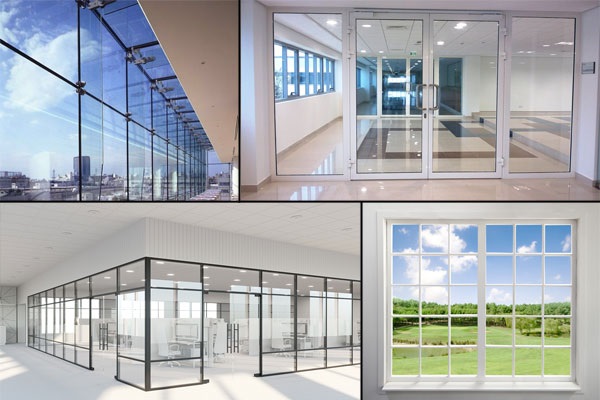In the realm of architecture, commercial glass stands out as a fundamental material in contemporary commercial buildings. Its versatility and visual charm have established it as a top choice among architects and designers, transforming the approach to designing and building commercial structures.
The Evolution of Commercial Glass
The utilization of glass in commercial structures has undergone substantial evolution. Technological progress has broadened its scope, enabling its integration not only as windows but also as a key structural component in numerous contemporary commercial buildings.
- Innovations in Glass Manufacturing
Advancements in glass manufacturing, including tempered and laminated glass, have significantly boosted its strength and longevity, rendering it ideal for various architectural uses. These progressions have played a crucial role in the extensive incorporation of commercial projects across Michigan.
Aesthetic Appeal and Natural Light
Glass is a popular choice in commercial architecture due to its capacity to elevate a building’s aesthetic charm and optimize natural light utilization.
- Enhancing Building Aesthetics
Glass’s sleek, modern aesthetics infuse commercial buildings with elegance and sophistication. The transparency of glass fosters an open ambiance, enhancing the buildings’ allure and accessibility.
- Maximizing Natural Light
Utilizing glass in commercial constructions maximizes natural light, diminishing the reliance on artificial lighting. This fosters a delightful and conducive environment for building occupants, enhancing productivity and well-being.
Energy Efficiency and Sustainability
Contemporary commercial glass serves a dual purpose beyond aesthetics; it serves as a vital component for enhancing energy efficiency and promoting sustainability, both critical factors in commercial construction endeavors.
- Insulated Glass Units (IGUs)
Insulated glass units, which consist of two or more glass panes separated by insulating air space, play a crucial role in enhancing a building’s thermal efficiency. This enhancement leads to decreased energy usage for heating and cooling, thereby promoting the sustainability of commercial constructions.
- Solar Control Glass
Solar control glass coatings can either reflect or absorb solar energy, playing a crucial role in moderating indoor temperatures and minimizing glare. This innovation proves highly advantageous in regions with fluctuating seasons that necessitate flexible solutions for enhancing energy efficiency.
Safety and Security
Safety and security stand as top priorities in commercial architecture. Glass employed in commercial environments is meticulously crafted to adhere to rigorous safety regulations, guaranteeing the welfare of those within the building.
- Laminated Safety Glass
Laminated safety glass, designed to stay intact when broken, is extensively employed in commercial buildings to minimize the potential for harm in case of breakage. This glass variant is especially common in high-traffic zones within commercial edifices.
- Fire-Rated Glass
Fire-rated glass is vital for bolstering the safety of commercial buildings. Engineered to endure high temperatures for a defined duration, it offers essential protection and facilitates safe evacuation during fires.
The Impact on Commercial Architecture
The incorporation of cutting-edge glass technologies has significantly influenced the commercial architecture sector, molding the layout and development of office buildings, retail stores, and other commercial real estate.
- Transforming Skylines
Glass used in commercial architecture has played a significant role in reshaping skylines. Buildings covered in glass have evolved into iconic landmarks, mirroring the state’s advancement and creativity.
- Promoting Sustainable Development
Prioritizing energy-efficient and sustainable glass solutions reflects our dedication to fostering environmentally responsible commercial development, and establishing a standard for upcoming projects.
Overcoming Challenges
While glass offers numerous advantages in commercial architecture, it also poses challenges like upholding thermal comfort and privacy. Tackling these issues demands creative design solutions and meticulous glass product selection.
- Balancing Transparency and Privacy
Balancing transparency and privacy in commercial buildings is paramount. Utilizing solutions like frosted or tinted glass can uphold privacy without compromising the ingress of natural light into the space.
- Thermal Comfort
Ensuring thermal comfort in glass buildings, particularly in varying climates, requires the utilization of high-performance glass with advanced insulating features. This helps reduce heat loss during winter and prevents excessive heat gain in summer.
Conclusion
Commercial glass plays a crucial role in shaping modern commercial structures in Michigan, combining aesthetics, functionality, and sustainability. With technological progress, the use of glass in commercial architecture is set to grow, fostering innovation and influencing the future commercial landscape.
